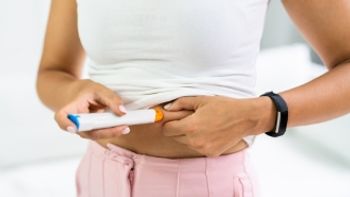
From Technology Selection to Final Drug Product: Material Sparing Approaches for ASD Development
Webinar Date/Time: Tue, Jan 30, 2024 11:00 AM EST
Amorphous solid dispersions (ASDs) are powerful tools for improving API bioavailability, and can be made by spray drying or hot melt extrusion. This webinar will look at using material-sparing approaches to decide which manufacturing route is best, and evaluate subsequent ASD tabletability.
Register Free:
Event Overview:
Low-solubility and poorly bioavailable compounds continue to challenge the pharmaceutical pipelines. Lonza specializes in formulating and manufacturing amorphous solid dispersions (ASDs) to enable successful formulations to be made with these problematic molecules. This webinar will focus on Lonza’s ‘right first time’ approach for quickly advancing a molecule to the clinic or commercialization. It uses material-sparing and time-saving approaches to facilitate decision-making across the entire ASD development process.
Feasibility screening is used to determine whether spray drying (SD) or hot melt extrusion (HME) is the best choice of manufacturing approach for a given active pharmaceutical ingredient (API). These are evaluated in parallel to highlight the key risks and requirements for each manufacturing route. In particular, this webinar will describe Lonza’s innovative approach to screening HMEs that better captures the physical process of extrusion at a milligram scale.
After feasibility screening, ASD development progresses from drug product intermediate to drug product with either a single lead intermediate (from HME or SD), or both. Material-sparing tools are used for both formulation selection and scale-up, as tablet formulations and processes that cater to the specific challenges of the intermediates are identified and screened. A focus will also be given to how the incorporation of a compaction simulator into feasibility and scale-up activities enables time, cost, and material sparing practices for ASD-based tablet feasibility and demonstration batches.
Key Learning Objectives:
- Understand key differences between spray drying and hot melt extrusion, and how feasibility screening guides decisions
- Learn about material-sparing uses of a compaction simulator to inform tablet development
- Discover how material-sparing techniques can save time and money when scaling
Speakers:
David Lyon
Sr. Fellow Research
Lonza Small Molecules
David Lyon currently serves as a Sr. Fellow, Global R&D, advising internal and external collaborations in bioavailability enhancement, inhalation, modified release, and bioprocessing. He received his B.S. in Chemistry from Western Washington University and Ph.D. in Inorganic Chemistry from the University of Oregon. Following a Post-Doctoral stint at the California Institute of Technology, David joined Bend Research as a Research Chemist in 1991. During his tenure at Bend Research, he held positions of increasing responsibility, culminating in the role of Senior Vice President of Research prior to the company’s acquisition by Capsugel and, subsequently, Lonza.
Allison DuRoss
Sr. Engineer, Product Development
Lonza Small Molecules
Dr. Allison DuRoss is a Senior Engineer in Solid Dosage and Bioavailability Enhancement (Product Development). Allison supports the innovation and integration of new technologies into product development, with a secondary focus on client support. Most recently, she worked with the solid dosage team to redefine the feasibility and scale-up offering at Lonza improving formulations and processes through the capabilities of the Styl’One Evo compaction simulator. She received her B.S.E. in Chemical Engineering from the University of Michigan and Ph.D. in Pharmaceutical Sciences from Oregon State University.
Register Free:
Newsletter
Get the essential updates shaping the future of pharma manufacturing and compliance—subscribe today to Pharmaceutical Technology and never miss a breakthrough.




